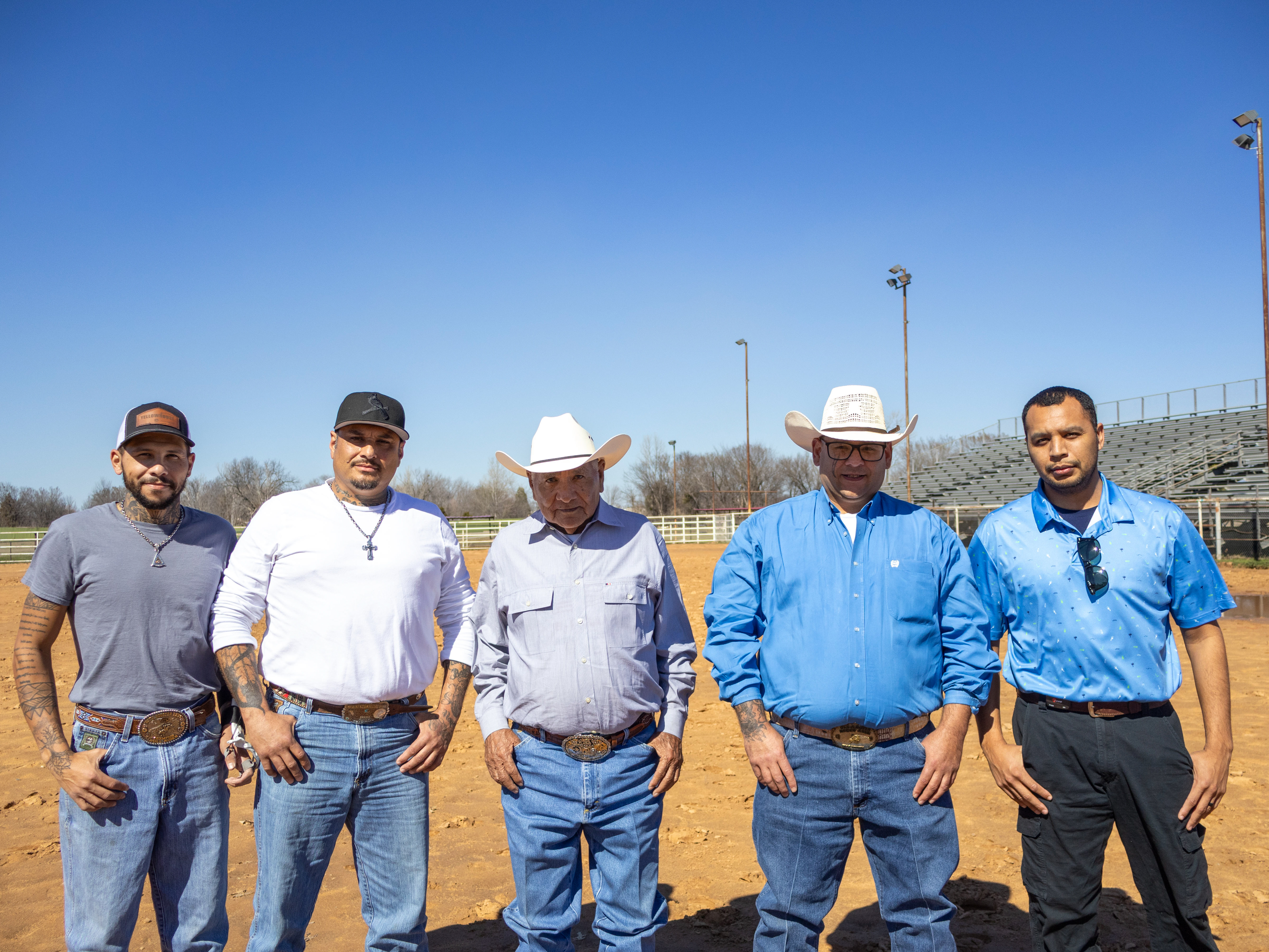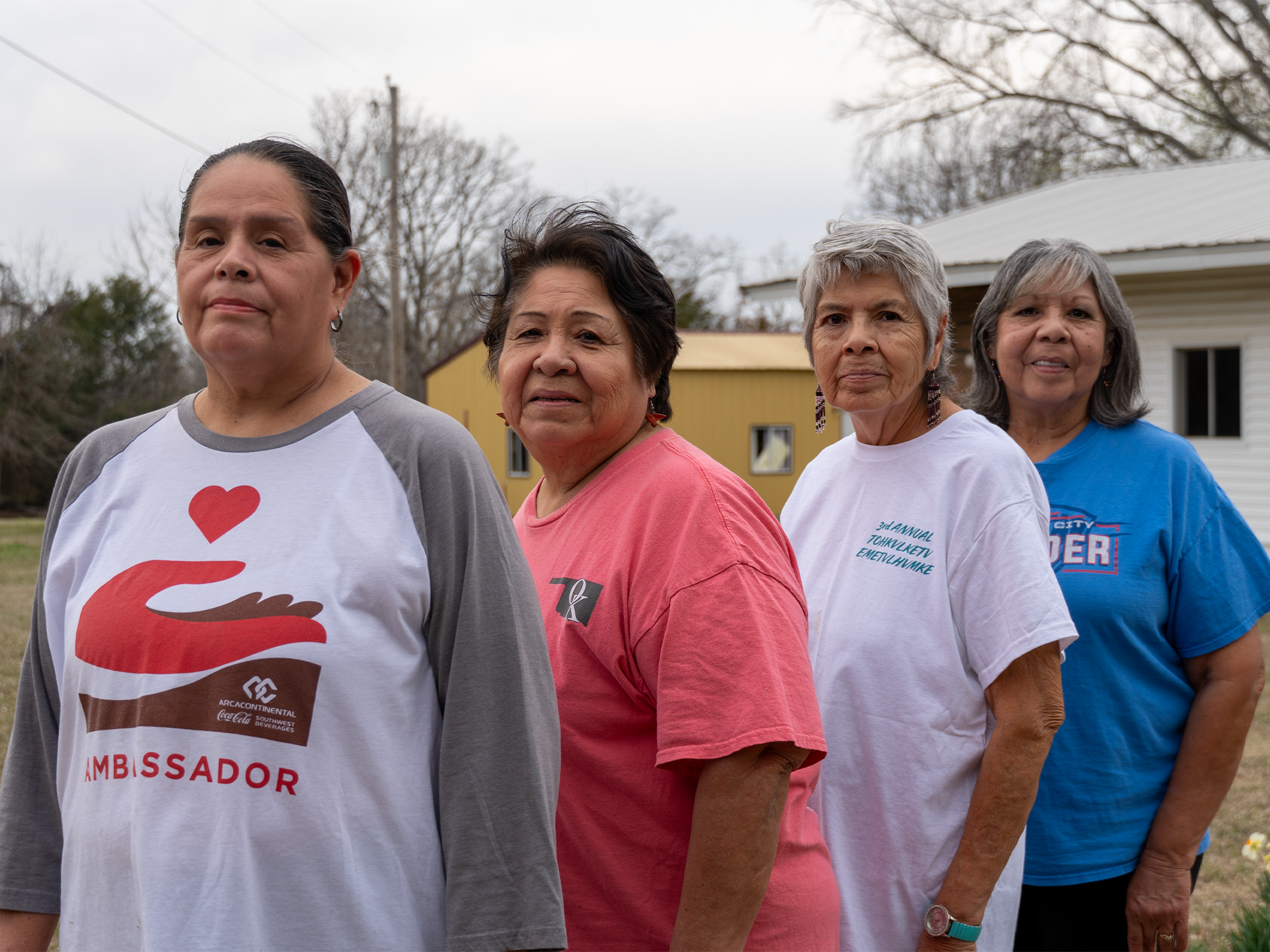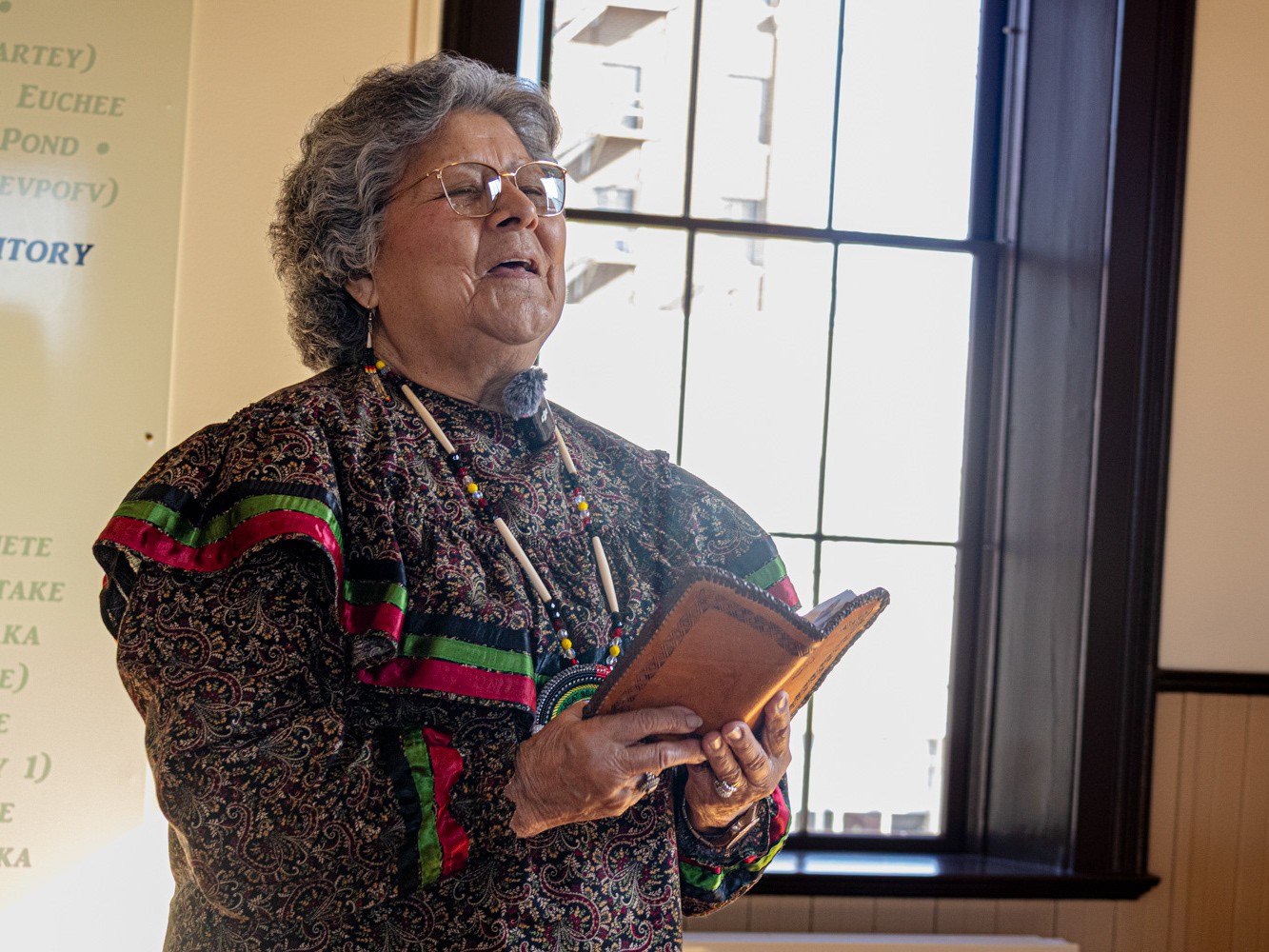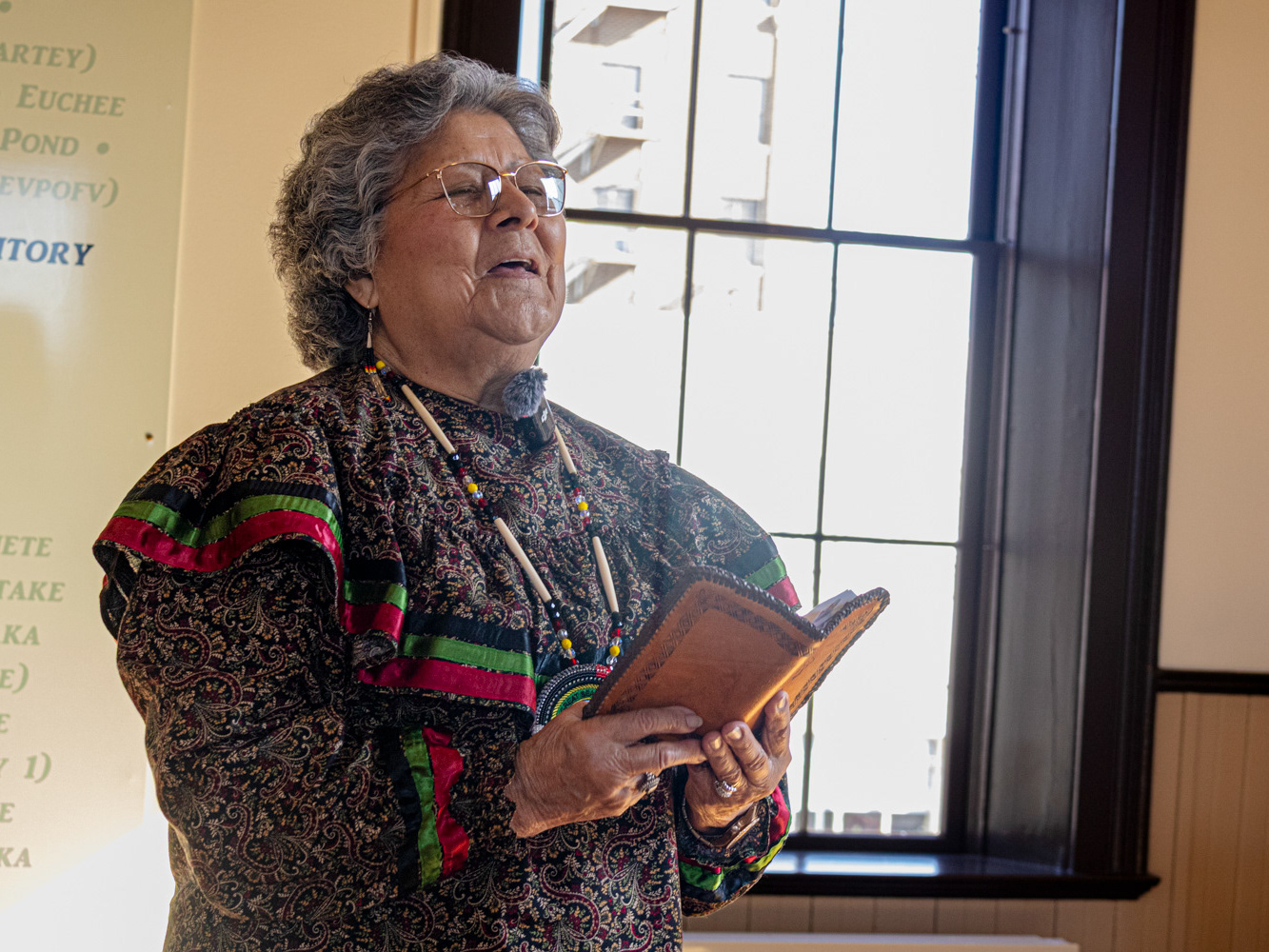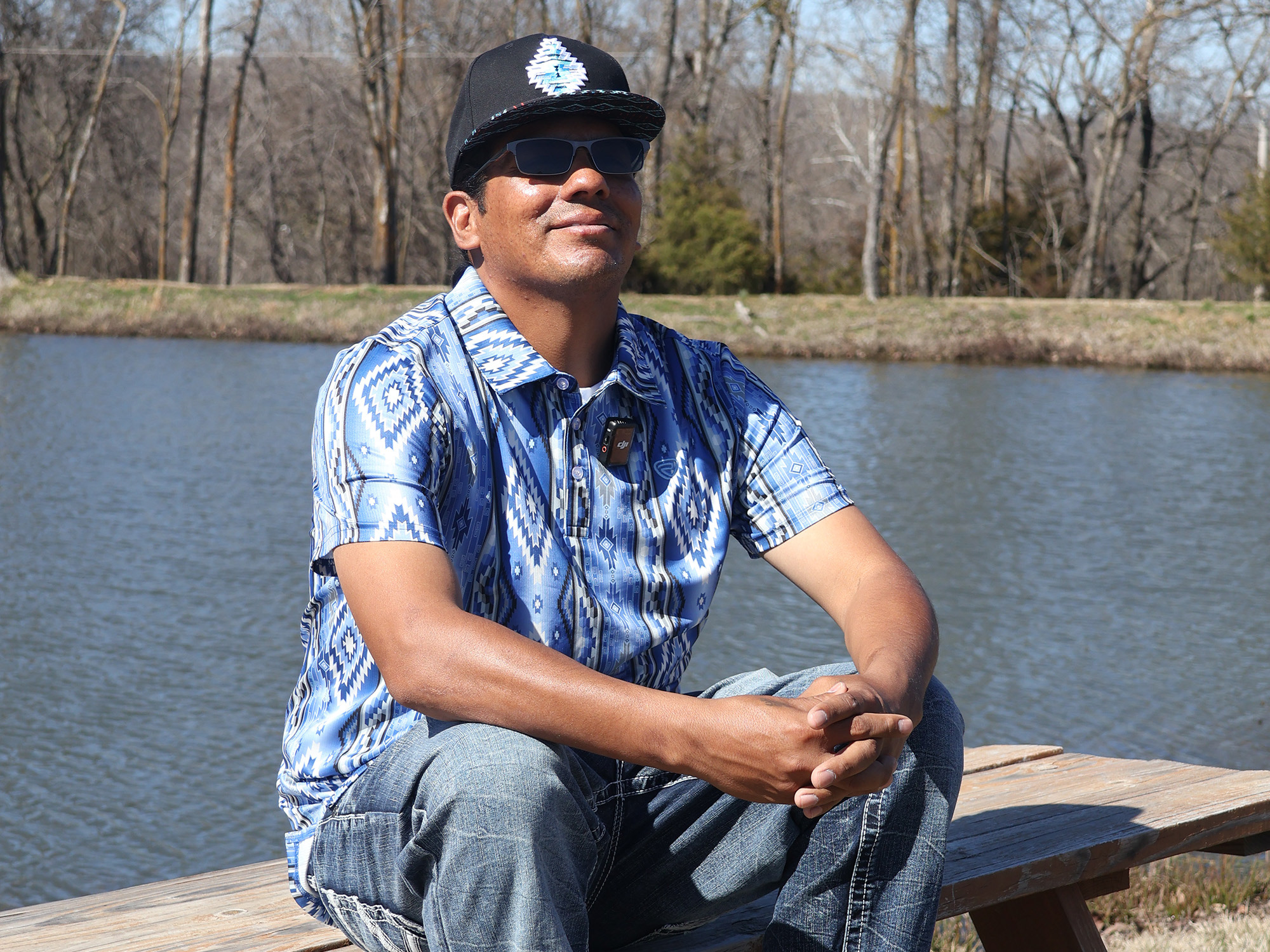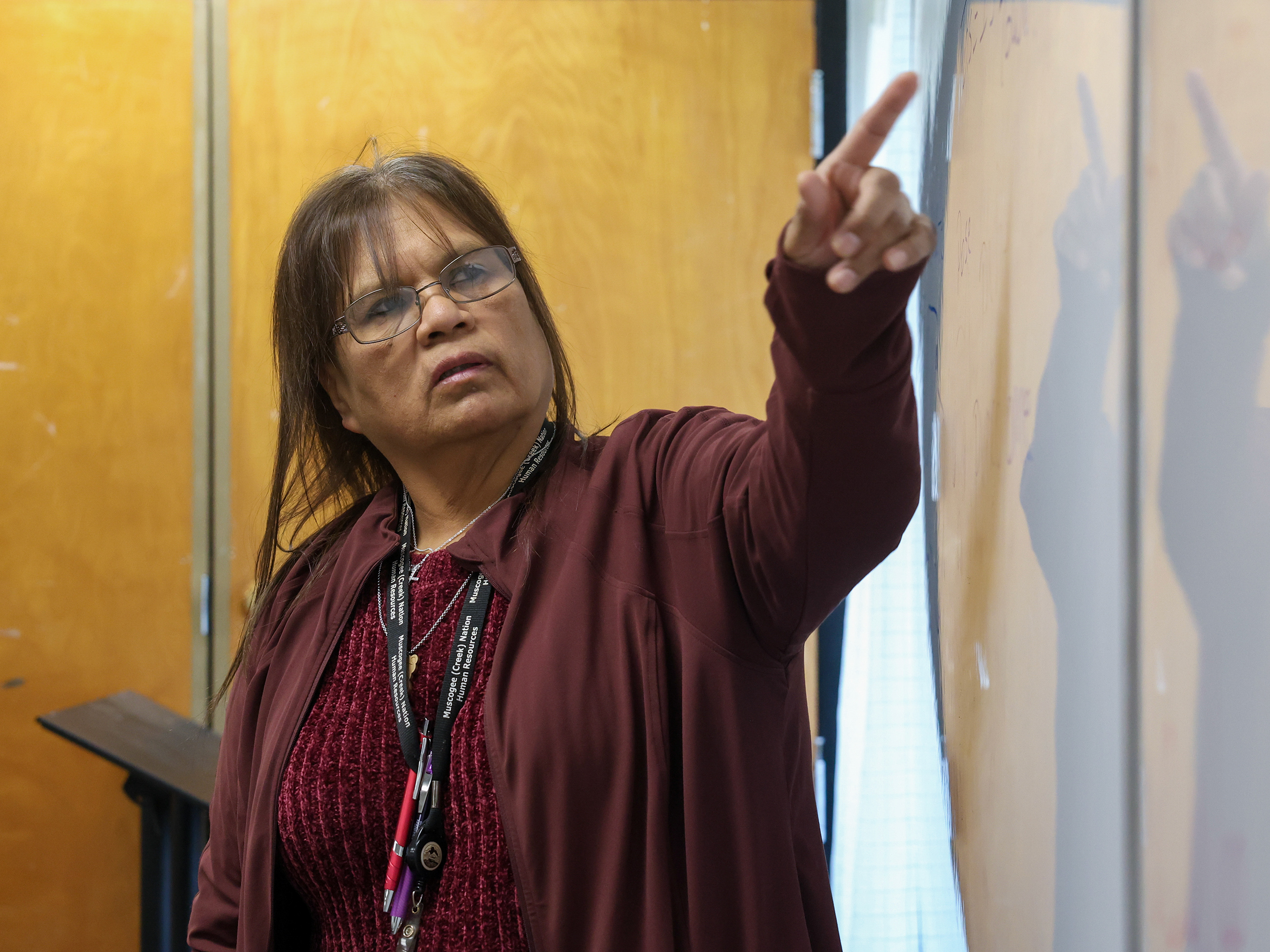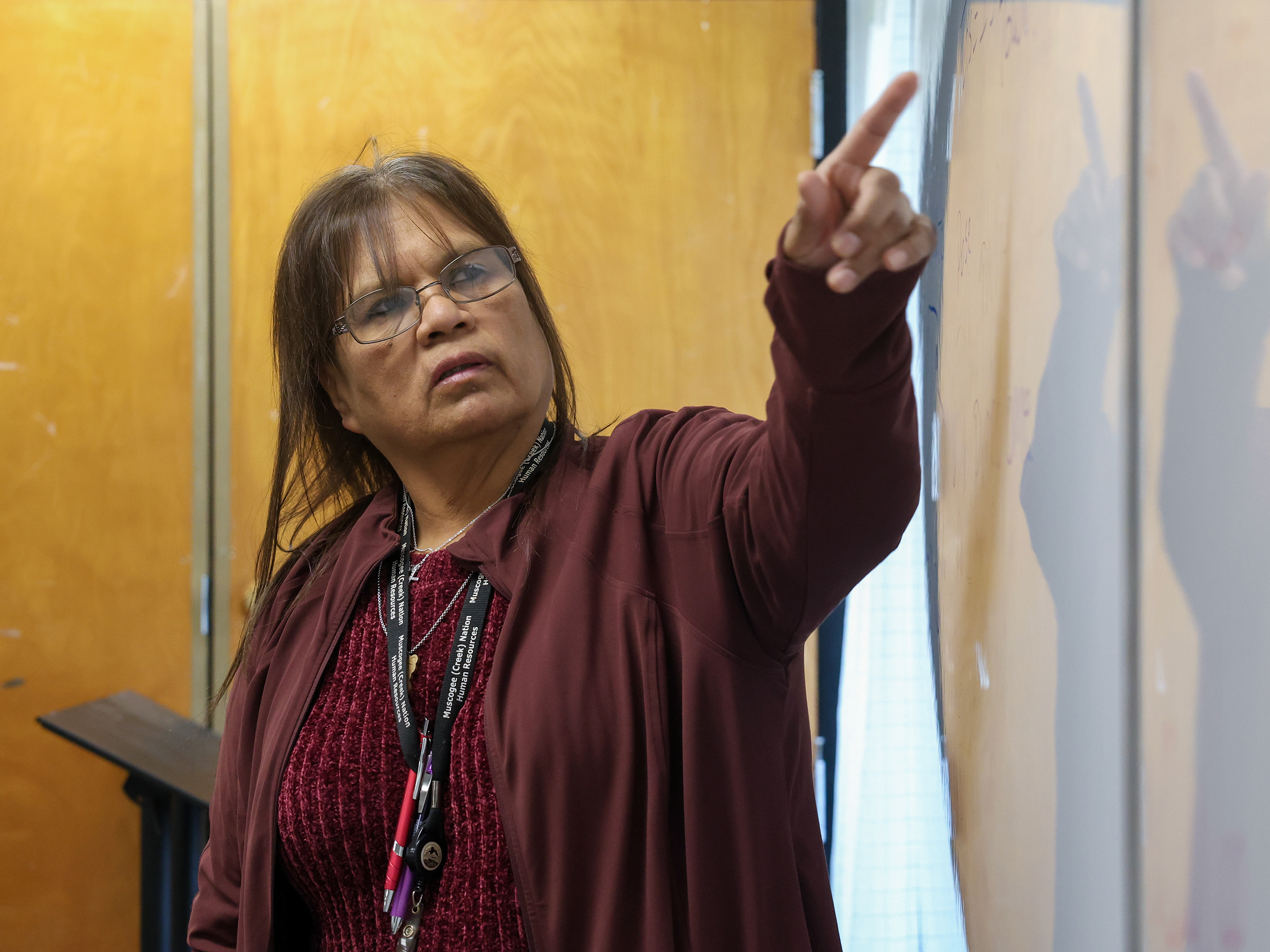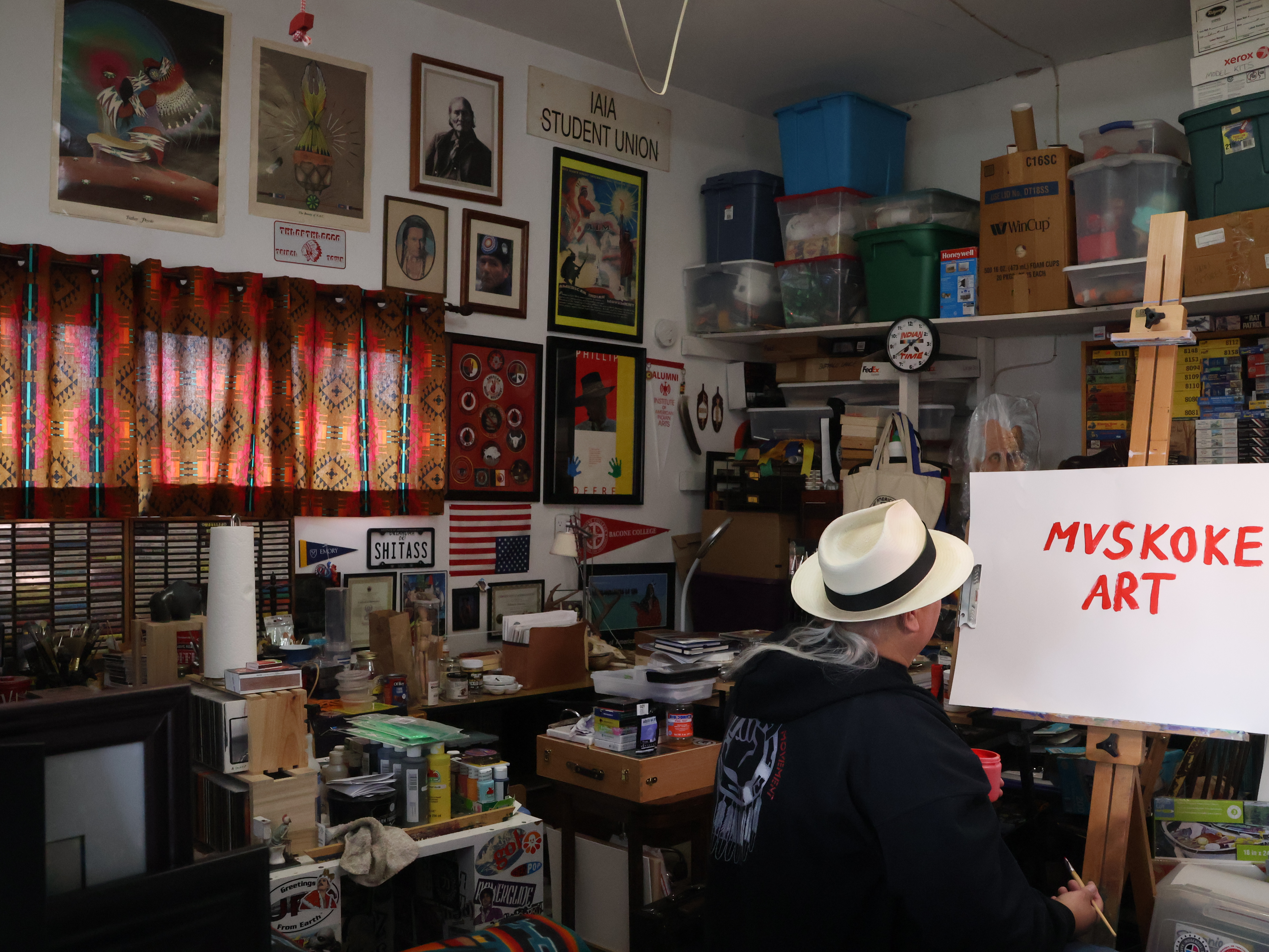Mvskoke Nation Curatorial Manager John Beaver standing outside of the Council House in downtown Okmulgee, Oklahoma, on March 10, 2025. Lauren Sicking
OKMULGEE, OK — Smack in the middle of downtown Okmulgee stands a landmark of Muscogee history. Old wood floors, a steep staircase and rooms filled with significant pieces that are a blast from the past fill the house in the center of town, which holds memories and history that helped shape the native nation today.
Once the original government building for the Mvskoke (Muscogee) Nation, the original house was a log cabin built in 1868 and rebuilt into the current stone structure in 1878. The house is now a museum open for the public to visit.
“We tried to build it back to the original materials,” Mvskoke Principal Chief David Hill said. “There is just a lot of history in there. I’m really grateful for the cultural preservation and archives department. They try to keep everything in.”
Few original pieces remain from the house when it was serving as a tribal complex. These pieces are displayed in the Council House and include the original dark wooden chief’s desk, wooden chief's chair with crossed patterns woven into the seat, an old sheet of plaster from the wall of the school room and three light-colored wooden chairs from the council meetings.
In 1907, at the arrival of Oklahoma statehood, the Mvskoke Nation was forced out of the council house, and in 1919, the city of Okmulgee bought it. In 2010, the tribal government bought the building back and is now able to showcase the value it holds.
“When Oklahoma became a state, they took that away from us,” Rae Lynn Butler, Mvskoke secretary of culture and humanities, said. “Every government building. Our court systems. They abolished all of that. Only in the last couple of decades have we been able to regain that property and that building that was always ours.”
The reconstruction of the Council House started in 2015 and was completed in 2018. When rebuilding, the nation wanted to make the house match the original as much as possible, such as the thick wooden floors, vibrant lighting on the light-colored walls, replica chairs and decorations that tell a story about the tribe.
When the renovations were finished in 2018, the council held its meeting in the Council House to acknowledge the reopening of the space. The council typically meets in the building at least once a year.
“While the Council House today certainly has the look and feel of a museum space, we are a functioning tribal government building,” Mvskoke Nation Curatorial Manager John Beaver said. “That’s not just important, but a pretty powerful educational statement.”
The building contains numerous pieces that tell the nation’s story. Artwork consists of items from Mvskoke paintings to statues and beadwork.
Beadwork of Mvskoke Seal. Emma Walls
“Some of my family’s art is in there,” Joy Harjo, the 23rd U.S. Poet Laureate and a Mvskoke Citizen, said. “It’s like a repository of stories, and that’s about connection.”
The house has stories to tell. Several people who visit tend to ask about a hanging tree on the front lawn of the Council House. Beaver said there is no current proof that these events occurred, but when the Council House was the government building, there were often ways of punishment through the Mvskoke justice system because there were no jails or prisons.
“I get lots of questions about the hanging tree,” Beaver said. “We can say, pretty much, to a fact, none of the trees that you see here today were standing or alive during the original construction of the two-story log cabin or the stone structure you see today.
Today, the Council House is open to the public to visit. Meetings sometimes take place in the building, school groups come through and other events are also held at the Council House. Such events help to preserve the tribe’s history, including the original language.
“Recently, we held a speaker gathering in there where we had over 50 fluent Mvskoke speakers sitting in the chambers of the Council House,” Butler said. “We just thought, ‘Wow, the walls have heard so much, and to hear our language spoken again in here with this many speakers in one place.’ It was really a beautiful time.”
For some, the Council House is just a building. For citizens of the Mvskoke Nation, the Council House is a building of stories and honors the ancestors of the nation. The council house preserves the memories of past chiefs, citizens and the ways the tribe has functioned over time.
“A lot of spirits there too,” Hill said. “The ancestors are still there, the former chiefs, former council reps. You can just feel the presence when you’re in that building. So, it means a lot to everyone here. That’s the original National Council House, you know.”
The Council House is located at 100 W 6th St., Okmulgee, OK 74447. The museum is open Monday-Friday from 10 a.m. to 4 p.m. Admission to visit the Council House is free.
The Trail of Tears sign located outside the Mvskoke Council House in Okmulgee, Oklahoma. Emma Walls
